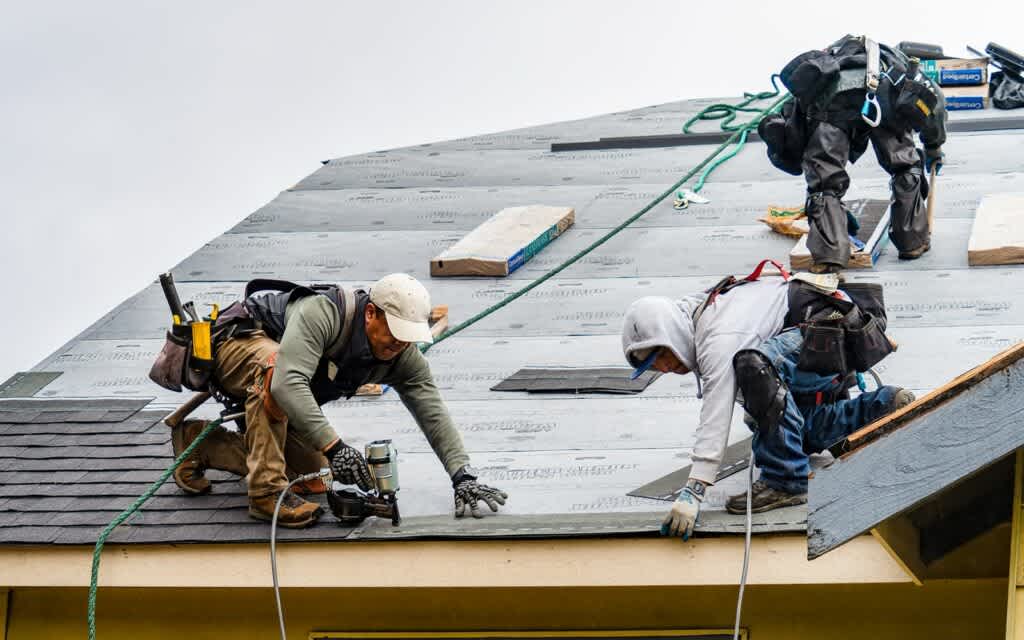
Heat, rain, and time wear down a roof far more quietly than most people realize. Small imperfections that go unnoticed for months can lead to costly damage later. Regular inspections, done with a trained eye, prevent these silent problems from becoming serious repairs that affect safety, comfort, and property value.
Annual Evaluations Exposing Hidden Moisture Intrusion Risks
Hidden moisture is one of the leading threats to a roof’s longevity. Annual roof inspections reveal small leaks that escape notice during the rest of the year. Over time, trapped moisture seeps into insulation, weakens wooden decking, and encourages mold growth that spreads through attic spaces. Routine evaluations help stop these issues early, long before they become visible stains or sagging ceilings.
Experienced inspectors use advanced moisture meters to detect areas of trapped water beneath shingles or membrane layers. This early warning system allows quick sealing or patching before materials degrade. Homeowners searching for roofing near me or roof repair near me often find that addressing moisture intrusion promptly avoids extensive structural repairs later.
How Routine Checks Extend the Service Life of Roofing Systems
Each inspection helps extend the useful life of a roof by identifying minor damage before it compounds. Professionals can spot curled shingles, worn flashing, or separated seams that weaken a roofing system’s overall structure. By correcting these flaws immediately, the materials maintain their waterproofing capabilities for many more years. Over time, this proactive maintenance approach reduces the frequency of major roof replacement projects. Consistent upkeep minimizes deterioration from UV exposure and heavy weather, preserving both the look and performance of the surface. Regular roof repair not only prevents future breakdowns but also ensures that the investment in premium materials delivers its full expected lifespan.
Small Structural Shifts Detected Before They Cause Major Leaks
A slight shift in structural alignment can alter the way water drains across a roof. Even a minor dip in decking can trap standing water, creating pressure points that invite leaks. Routine inspections uncover these subtle changes, especially in regions prone to temperature swings that cause expansion and contraction.
The earlier these structural movements are found, the easier they are to correct. Reinforcing sagging areas or re-securing loose sheathing can restore stability before the first sign of interior water damage appears. For those needing Madison roof repair, these early adjustments save money and prevent emergency calls after a heavy storm.
Why Debris Accumulation Threatens Shingle Durability over Time
Leaves, branches, and dirt seem harmless but gradually shorten shingle lifespan. Organic matter traps moisture against the surface, accelerating rot and breaking down protective granules. A roof layered with debris often becomes the starting point for mildew and algae growth that spread quickly across shaded areas.
Annual cleaning during inspections helps maintain airflow and allows the shingles to dry properly after rainfall. Clearing gutters and downspouts ensures water drains efficiently, reducing the weight and strain on the edges of the roof. Addressing these issues early through regular roof repair services keeps materials intact and prevents avoidable deterioration.
Can Regular Inspection Reduce Sudden Emergency Repair Costs
Emergency roofing work tends to happen at the worst times—during storms, high winds, or cold months. Preventive inspections drastically reduce these last-minute crises by identifying weak areas before they fail. Technicians can reseal flashings, repair nail pops, and tighten vent boots, preventing stormwater from finding an entry point.
This preventive mindset saves homeowners from high emergency fees and temporary fixes. Keeping up with regular evaluations makes it easier to schedule planned maintenance with a trusted roof repair company instead of waiting for unexpected damage to force immediate action. Predictable scheduling keeps costs manageable and stress minimal.
Seasonal Wear Patterns Documented for Proactive Maintenance
Each season leaves a different mark on roofing materials. Summer heat expands shingles, while winter brings contraction and potential cracking. Documenting these patterns year after year allows professionals to predict where problems are most likely to develop next.
This record becomes a guide for proactive maintenance planning. Instead of reacting to damage, the homeowner and inspector can work together to anticipate repairs before issues worsen. Regular updates also provide valuable insight for those budgeting for long-term roof replacement down the line.
Inspection Scheduling Aligning with Warranty Protection Standards
Many roofing warranties require documented maintenance to remain valid. Skipping annual inspections could risk voiding coverage if a failure occurs. Scheduling a professional review each year ensures compliance and preserves warranty benefits for materials and workmanship.
Manufacturers often require certified inspection reports as proof that the roof has been properly maintained. A consistent schedule ensures that any minor repairs are handled according to warranty terms. For anyone who recently searched for roof repair near me, this added protection provides peace of mind that future claims will be honored.
Long-term Home Value Supported Through Consistent Roof Monitoring
A well-documented inspection history demonstrates responsible home ownership. Buyers see this as a strong indicator that the property has been cared for and that the roof remains in sound condition. Consistent maintenance records also reduce hesitation during negotiations, as fewer hidden problems are likely to exist.
Over the years, this consistency builds both trust and real value. The small investment in annual inspection services pays off by preserving curb appeal and reducing the risk of costly structural damage.